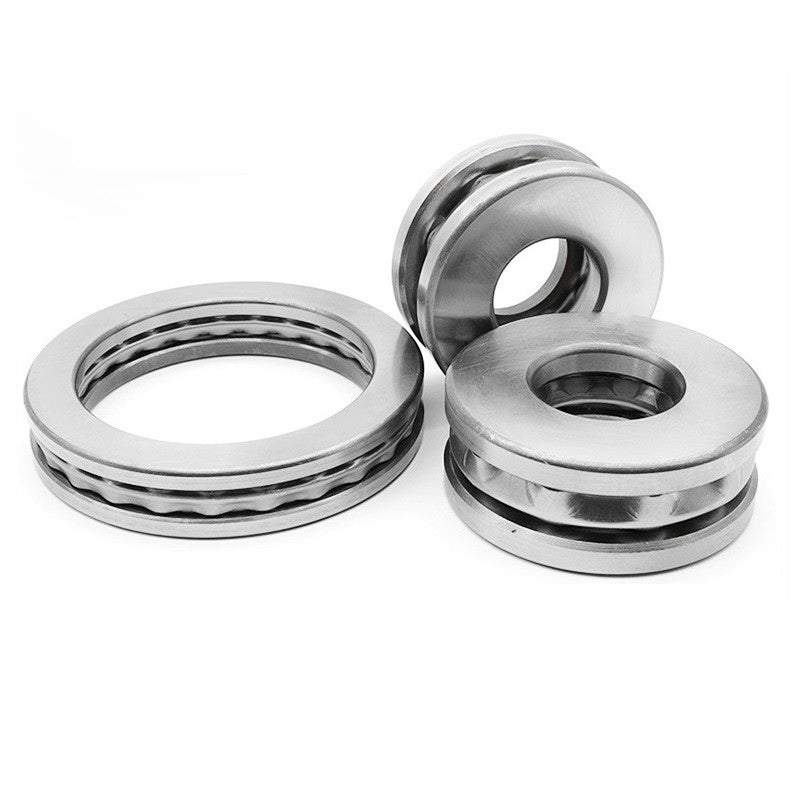1. Product core introduction
Our Thrust Ball Bearings Miniature High Precision are outstanding hardware fittings specifically designed for applications with strict requirements for precision and performance. Whether in precision machinery, small equipment, or creative DIY projects at home, these bearings can play a crucial role, providing stable and efficient operation support for your creations. They are manufactured using high-quality materials and advanced production techniques, ensuring precise thrust bearing within a very small space, making them an ideal choice for realizing the perfect combination of creativity and functionality.
2. The main characteristics of the product
• Exceptional Precision
The bearings are manufactured with advanced grinding and machining techniques, ensuring that the dimensions of the inner and outer rings, as well as the balls, are held to extremely tight tolerances. This results in a remarkably low coefficient of friction and minimal runout, enabling precise and consistent operation.
• Compact Miniature Design
Their small size allows for easy integration into tight spaces, making them suitable for a wide range of miniaturized equipment and DIY gadgets. Despite their diminutive stature, they do not compromise on load-carrying capacity, providing robust support for axial thrust.
• Premium Material Quality
Constructed from high-strength and corrosion-resistant alloy materials, these bearings offer excellent durability and resistance to wear and tear. This ensures a long service life, even under harsh operating conditions, reducing the need for frequent replacements.
• High Load-Bearing Capacity
The unique design of the thrust ball bearings enables them to handle significant axial loads. This makes them ideal for applications where heavy forces need to be managed, ensuring the stability and reliability of the overall system.
3. Product use scene
• Smart Home Devices: Such as small smart robots, smart curtain motors, etc., helping them achieve precise motion control, ensuring the stable and quiet operation of the device, and enhancing the overall performance and user experience of the smart home system.
• Precision Instruments and Meters: In various precision measuring instruments and optical equipment, it provides precise support and rotation for key components, ensuring the measurement accuracy and stability of the instrument, meeting the needs of fields with extremely high precision requirements such as scientific research and experiments.
• Creative DIY Projects: For example, self-made small wind generators, personalized rotating display racks, etc. With its miniature size and high precision characteristics, your creativity can be perfectly realized, adding professional charm and practical value to your DIY works.
• Small Electronic Products: Such as portable hard disk drives, mini fans, etc., ensuring the smooth operation of internal rotating parts, improving the reliability and service life of electronic products, and reducing heat and noise generated by friction, optimizing product performance.
4. Product use instructions
• Pre-Installation Preparation: Before installation, ensure that the working area is clean and dry to avoid dust and impurities from entering the bearing. Carefully inspect the appearance of the bearing to ensure there is no damage, deformation, or foreign matter attached. At the same time, prepare appropriate installation tools, such as small wrenches, tweezers, etc., and avoid using excessive force to cause damage to the bearing.
1、Installation Steps:
Gently place the bearing into the installation position, ensuring its correct positioning. The inner and outer rings should fit closely with the mating parts to avoid skew or offset.
For bearings that need to be fixed, use appropriate nuts or circlips for fastening. Pay attention to the appropriate tightening torque, which should be sufficient to ensure the firm installation of the bearing without over-tightening that may cause deformation or damage to the bearing.
During the installation process, if significant resistance is encountered, do not force the installation. Instead, check whether there are issues such as inaccurate installation position, overly tight fit, or foreign matter obstruction, and make timely adjustments and clean-ups.
2、Usage Precautions:
Avoid operating the bearing under conditions exceeding its rated load. Regularly check the operating status of the equipment. If abnormal noise, vibration, or overheating is detected, immediately stop the machine and check to identify the cause of the fault and prevent further deterioration of the problem.
During use, try to avoid the bearing from being eroded by liquids such as water and oil. If unavoidable contact with liquids occurs, perform cleaning and drying treatment in a timely manner and apply an appropriate amount of rust inhibitor to protect the surface and internal structure of the bearing.
For equipment that is not in use for a long time, it is recommended to rotate and maintain the bearing regularly to prevent local indentations or corrosion between the balls and raceways due to long-term inactivity, which may affect the performance and service life of the bearing.
3、Maintenance and Care:
Depending on the frequency of use and the working environment, clean and lubricate the bearing regularly. Use a clean lint-free cloth or a special bearing cleaner to wipe the surface of the bearing to remove dirt and impurities, and then apply an appropriate amount of high-performance grease to ensure a good lubricating film is formed between the balls and raceways, reducing friction and wear.
Regularly check the sealing condition of the bearing. If the seal is found to be aged, damaged, or ineffective, replace it in a timely manner to prevent dust, moisture, and other impurities from entering the bearing and affecting its normal operation and service life.
When performing maintenance or repair on the equipment and if it is necessary to disassemble the bearing, use the correct disassembly method and tools to avoid unnecessary damage to the bearing. After disassembly, conduct a comprehensive inspection and evaluation of the bearing and decide whether it needs to be repaired or replaced based on its wear condition.













